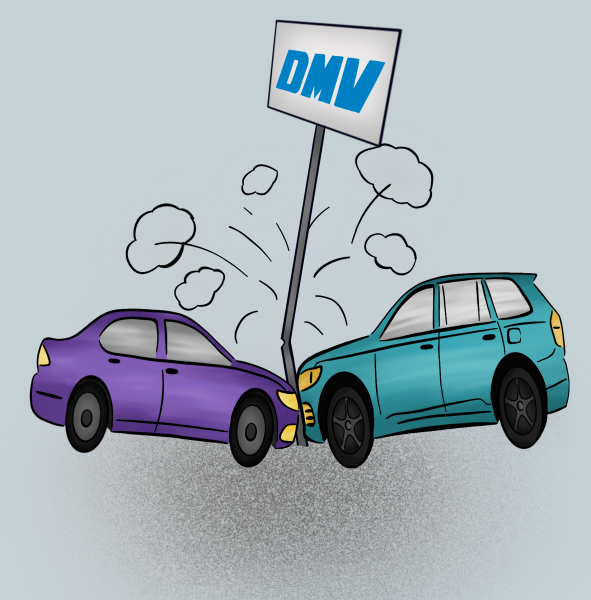New College Application Not Effective Solution
May 26, 2016
College. That single word that can provoke 2 very different emotions in seniors and juniors.
In seniors: relief, excitement, promise of freedom. In juniors: anxiety and uncertainty.
The college application process for this graduating senior was kind of a long, drawn-out, somewhat stressful time period and I’ve only just finished with it. Unfortunately, the process might become even more drawn-out and stressful for future generations of college applicants.
While I applied to most schools using the Common Application, juniors will have another application option starting next fall. This application was put together by a group of over 80 public and private colleges calling themselves the Coalition for Access, Affordability, and Success.
It’s called the Coalition Application.
According to a New York Times article titled “Can a New Coalition of Elite Schools Reshape College Admissions?” by Laura Pappano, which introduces the new application, the goal of the Coalition Application is “to make applications more reflective and in tune with how students organize and express themselves. In April, it will offer free online planning tools and in July a new application, for the class of 2021.”
According to another New York Times article titled “Colleges Vow to Simplify Application Process,” the Coalition hopes to make the college application process easier for disadvantaged students. The application will also come with online tools to help students as young as high school freshmen find more information on colleges and financial aid.
The final major new feature is an online “locker” where students will be able to upload videos, photos, and written work to be submitted along with college applications.
Increasing access and reducing stress are 2 very admirable goals, but I think the Coalition Application will not live up to these expectations.
Let’s start with their claim that the Coalition Application will increase access.
Many smart, low-income students don’t apply to top colleges because they lack the guidance to do so according to an National Public Radio article titled, “Why Many Smart, Low-Income Students Don’t Apply to Elite Schools.” In theory, the Coalition Application, which comes with college information that any freshmen can access, will help low-income students learn more about elite colleges. In reality, however, it will not help them get in or attend.
To join the Coalition and use the application, member colleges must meet 100% of students’ demonstrated financial need. This sounds great, but it’s also quite costly, and some schools don’t have large enough endowments or budgets to afford it. As a result, some schools are thinking of going need-aware, a policy that uses applicants’ ability to pay as a factor in their admissions decisions, to be able to join the Coalition. Over time, I think administrator greed will lead them to reject low-income applicants in large part because of their inability to pay. This will ultimately harm low-income students’ access to selective schools.
Secondly, if students from low-resource high schools already don’t get the guidance to apply to the Coalition schools, they probably won’t be guided to craft a resume for the Coalition Application’s locker, which will still leave them on unequal footing with students from privileged high schools.
This leads me to one of my major problems with the Coalition Application: it is not just for lower-income students, but also for students coming from affluent families who are obsessed with prestigious colleges.
According to a 2002 paper by economists Stacy Berg Dale and Alan B. Krueger, students of comparable academic ability made roughly the same amount of income no matter how selective the college they attended. The exception was for low-income students. Those who attended more prestigious schools did earn more than their peers at lesser-known schools.
In other words, for lower-income students, many of whom lack guidance, learning about college earlier will give them opportunity to get in to more selective colleges that will set them up with the connections they need to succeed. However, for higher-income students who are already well-connected and financially well-endowed, this will only prolong the already stressful college admissions frenzy.
With the advent of the locker, the pressure to carefully manufacture a portfolio of supplemental materials and a full resume of extracurricular activities will only begin earlier, in students’ freshmen year or even before that. This emphasis on building a portfolio so early on in students’ high school careers will penalize those who need time to find their passion, the so called “late bloomers.”
Additionally, I believe there isn’t much point in starting the college search so early, as teenagers are prone to changing their minds and maturing throughout high school. Although I started going on college tours the summer after 8th grade, I didn’t know what I wanted in a college then. When I was a sophomore and junior I was pretty sure I wanted to go to a large, co-ed research university in a big city. I did apply and get in to a few such schools, but I ultimately chose to attend a comparatively small women’s liberal arts college in a Massachusetts town – pretty much as far from my prior criteria as one can possibly get.
I find it difficult to believe that most students who start their college search as freshmen will have the same criteria for a good college by their senior year.
I discovered my “best fit” not through more contact with glossy brochures, sleek websites, and representatives cherry-picked by admission departments, but by going through high school, talking to real students and graduates from the colleges I was considering, and just generally living through life to discover more about myself. A new college application will not help students do this.
The Coalition Application additionally perpetuates elitism and an obsession with the name of a school. Only 140 colleges are eligible to actually join the Coalition. According to Pappano’s article, “Coalition members must have a six-year graduation rate of at least 70 percent and meet students’ full financial need or, if public, offer ‘affordable’ in-state tuition (as yet undefined). So far, more than 80 of about 140 eligible colleges and universities have signed on, including all the Ivys, liberal arts elites like Amherst and Bowdoin and publics like Texas A&M and Miami University of Ohio.”
Nor will creating a new application solve the stress problem. I think the root of the problem is that colleges aggressively market themselves to students, encouraging more students to apply to way more schools than necessary. This artificially drives down admissions rates, makes the next year’s applicants even more anxious about their odds of getting in, leading students to submit more applications and creating a vicious cycle. By creating the Coalition Application, these colleges are simply paying lip service to the college admissions stress issue.
I’m not saying that the current Common Application is great, but the new college coalition app will exacerbate this stress.
If they truly want to increase access, Coalition colleges should be required to be need-blind. They should then lower the cost of attendance for low and middle income students by cutting frivolous amenities – I’m talking about those schools that are building lazy rivers on campus – and administrator salaries, so that they can give more financial aid in grants instead of loans. This way, low- and middle-income students will be able to graduate without being chained to their massive student debt – and thus start their post-college lives on equal footing with their wealthy peers.
At the very least, the Coalition should restrict use of their new application to low- to lower-middle income students. Allowing students from economically privileged families to use the application will unnecessarily increase the pressure to get in to a “prestigious” college.
And if colleges truly want to reduce anxiety over college applications, they should stop much of the the never-ending self-promotion and promoting the inflation of application numbers. If fewer students apply to colleges they only have a shallow interest in actually attending, it would lower the number of students applying to each college, which would increase admissions rates so that applicants would not see the admissions process as a crapshoot and send off a ton of applications in hopes of gaming the system. They could also spread the message that where you go matters less than what you do there.
Unfortunately, that’s anathema to their bottom line and is unlikely to happen.



